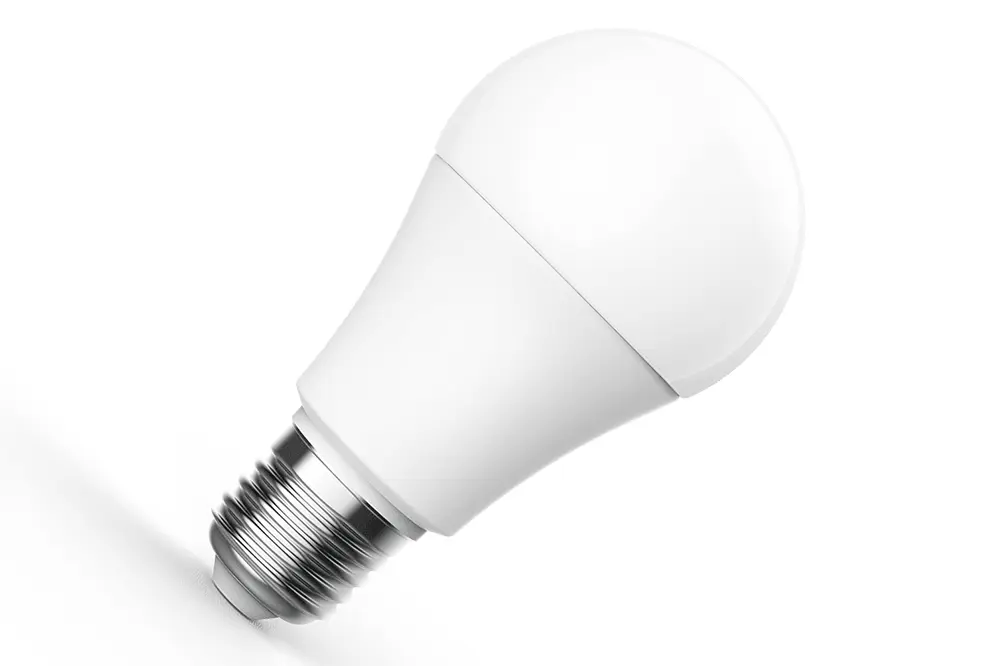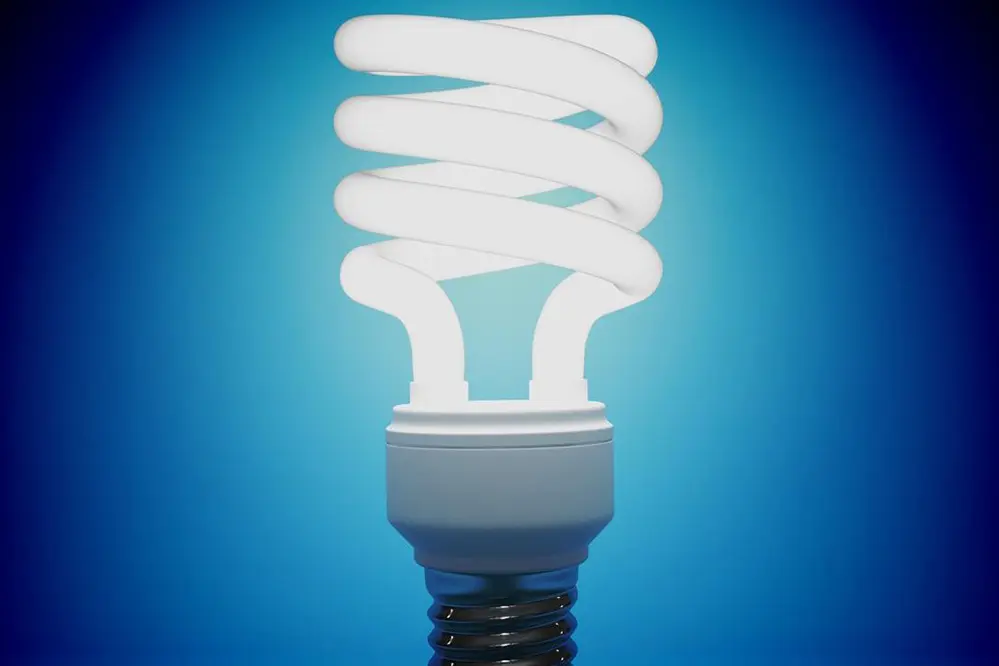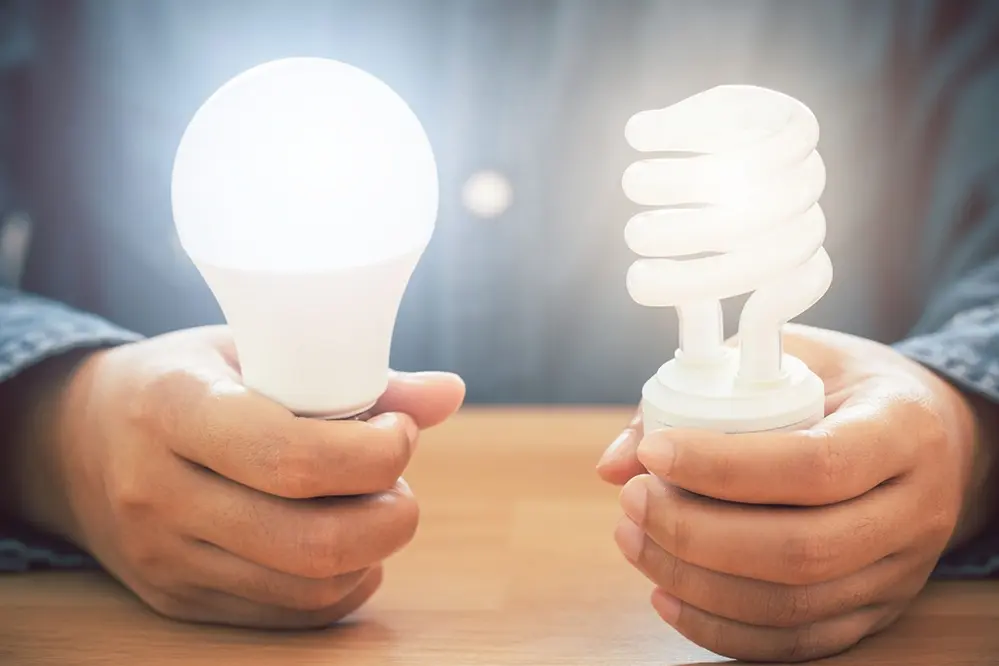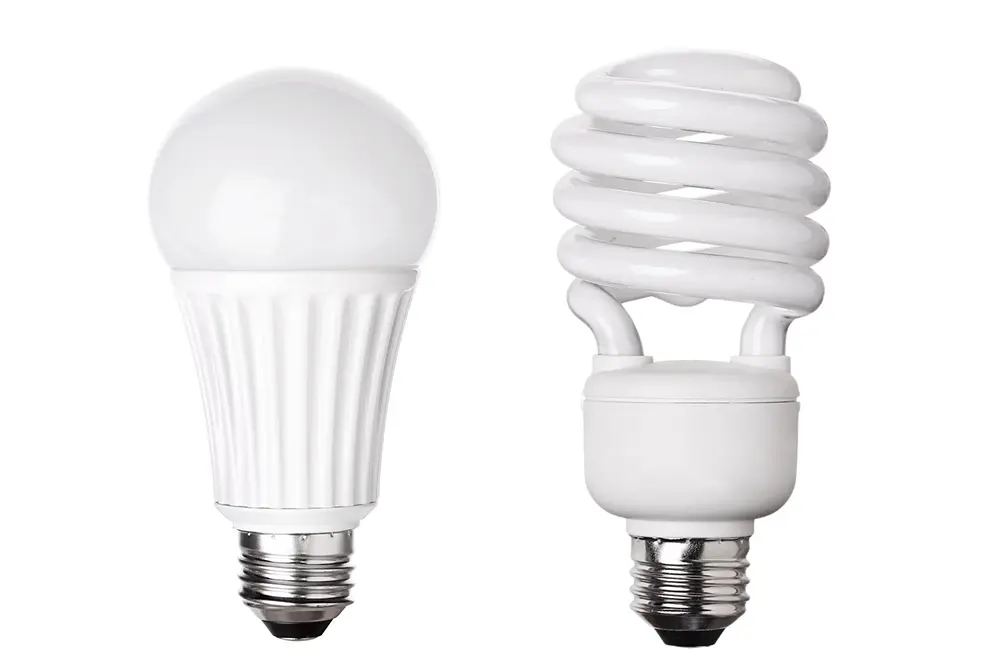Are you tired of the dull, outdated lighting in your home? Looking for a way to brighten up your space while also saving energy? Look no further than the battle of the bulbs: LEDs vs CFLs. In this blog post, we’ll explore the pros and cons of these two popular lighting options, helping you make an informed decision that will not only enhance the ambiance of your home but also contribute to a more sustainable future.
When it comes to lighting your home, choosing between LEDs and CFLs can be a daunting task. Both options have their own unique advantages and disadvantages, making it crucial to understand the differences before making a decision. LEDs, or Light Emitting Diodes, have gained popularity in recent years due to their exceptional energy efficiency and long lifespan. On the other hand, CFLs, or Compact Fluorescent Lights, have been a go-to choice for many years, offering a more affordable alternative. But which one is truly the superior choice for your home? Let’s find out.
Now, let me introduce myself. I’m Tom, a seasoned professional in the LED lighting industry with over 15 years of experience. Throughout my career, I’ve witnessed the remarkable advancements in LED technology and have gained a deep understanding of its benefits and applications. Drawing from my extensive knowledge, I’ve meticulously crafted this blog post to provide you with valuable insights and help you navigate the world of LEDs vs CFLs with confidence.
So, whether you’re a lighting enthusiast or a professional in the field, this blog post is your ultimate guide to making the right lighting choice for your home. Let’s dive right in and shed some light on the fascinating world of LEDs vs CFLs. Get ready to illuminate your space efficiently and stylishly, while also contributing to a greener tomorrow.
Understanding LEDs

Definition and Working Principle
LEDs, or Light Emitting Diodes, are semiconductor devices that emit light when an electric current passes through them. Unlike traditional incandescent bulbs, which rely on heating a filament to produce light, LEDs use a process called electroluminescence. This process involves the movement of electrons in a semiconductor material, resulting in the emission of light.
Advantages of LEDs
- Energy Efficiency: LEDs are renowned for their exceptional energy-saving capabilities. Compared to traditional lighting options, such as incandescent bulbs, LEDs consume significantly less electricity while providing the same level of brightness. This translates to substantial cost savings in your electricity bills over time.
- Long Lifespan: One of the standout features of LEDs is their extended lifespan. On average, LED bulbs can last up to 25 times longer than traditional incandescent bulbs. This means fewer replacements and less hassle for you. Additionally, the durability and reliability of LED bulbs make them a long-term investment.
- Versatility and Design Options: LED technology offers a wide range of lighting options to suit various preferences and needs. From warm to cool white light, as well as a spectrum of colors, LEDs provide flexibility in creating different lighting effects. Furthermore, LEDs come in various shapes and sizes, making them suitable for a variety of lighting fixtures and applications.
Limitations of LEDs
- Higher Initial Cost: It’s important to note that LEDs generally have a higher upfront cost compared to traditional bulbs. However, it’s crucial to consider the long-term benefits. The energy savings and extended lifespan of LEDs outweigh the initial investment, making them a cost-effective choice in the long run.
- Heat Dissipation: LEDs generate heat during operation, and proper heat management is essential to ensure their longevity. Heat sinks and proper ventilation are necessary to dissipate the heat effectively and maintain optimal performance.
Exploring CFLs

Definition and Working Principle
CFLs, or Compact Fluorescent Lights, are energy-efficient lighting options that work on the principle of fluorescence. Inside a CFL bulb, an electric current excites mercury vapor, which emits ultraviolet light. This ultraviolet light then interacts with a phosphor coating inside the bulb, producing visible light.
Advantages of CFLs
- Energy Efficiency: CFLs are known for their energy-saving capabilities. Compared to traditional incandescent bulbs, CFLs consume approximately 75% less energy while providing the same level of brightness. This translates to significant reductions in electricity consumption and lower energy bills.
- Affordability: CFL bulbs are generally more affordable than LEDs, making them a budget-friendly option for those looking to upgrade their lighting without breaking the bank. The lower upfront cost of CFLs can be appealing, especially for individuals on a tight budget.
- Availability and Compatibility: CFL bulbs are widely available in the market, making them easily accessible for consumers. Additionally, CFLs are compatible with existing lighting fixtures, allowing for a seamless transition from traditional incandescent bulbs.
Limitations of CFLs
- Mercury Content: CFL bulbs contain a small amount of mercury, which raises environmental concerns. Proper disposal and recycling of CFL bulbs are crucial to prevent mercury pollution. It’s important to handle and dispose of CFL bulbs responsibly to minimize their environmental impact.
- Warm-up Time and Flickering: Unlike LEDs, CFL bulbs require a short warm-up time before reaching their full brightness. Additionally, some older CFL models may exhibit initial flickering before stabilizing. However, newer CFL models have improved in these aspects, reducing warm-up time and minimizing flickering.
Making the Right Choice

When it comes to choosing between LEDs and CFLs, several factors should be considered.
Factors to Consider
- Lighting Needs and Preferences: Assess your specific lighting requirements and desired ambiance. Consider factors such as brightness, color temperature, and dimming options to determine which lighting option aligns best with your needs.
- Energy Efficiency and Longevity: Both LEDs and CFLs offer energy-saving benefits compared to traditional incandescent bulbs. Compare their energy consumption and lifespan to make an informed decision based on your long-term sustainability goals.
Practical Applications
- Residential Lighting: LEDs and CFLs are suitable for various areas of the home, such as living rooms, kitchens, and bedrooms. LEDs provide versatility in creating different lighting effects, while CFLs offer an affordable option for general lighting needs.
- Commercial and Industrial Lighting: In commercial and industrial environments, LEDs are often the preferred choice due to their energy-saving potential and cost-effectiveness. The long lifespan of LEDs reduces maintenance costs and enhances overall efficiency.
FAQs
Are CFLs better than LEDs?
CFLs (compact fluorescent lights) and LEDs (light-emitting diodes) are both energy-efficient lighting options, but they have some differences that make one better suited for certain situations than the other.
CFLs are generally more affordable upfront compared to LEDs, but they have a higher energy consumption and shorter lifespan. They also contain a small amount of mercury, making them more challenging to dispose of properly. CFLs are most effective in areas where the lights will be on for longer periods of time, as frequent switching on and off can reduce their lifespan.
On the other hand, LEDs are more expensive initially but offer significant long-term energy and cost savings. They have a longer lifespan and can last up to 25 times longer than CFLs. LEDs also do not contain mercury and are more environmentally friendly. They are highly versatile and work well in both residential and commercial settings, as they can be easily dimmed and offer better control over lighting direction.
In terms of light quality, LEDs generally provide better color rendering and have a wider range of color temperatures to choose from. They also have a more focused beam of light, making them ideal for task lighting or accent lighting purposes.
Overall, the choice between CFLs and LEDs depends on factors such as budget, energy efficiency, lifespan, and the specific lighting requirements of the space. It is important to consider these factors and make an informed decision based on your specific needs and preferences.
Which is better for your eyes LED or CFL?
LED is generally better for your eyes compared to CFL. LEDs produce a more natural light, reducing strain and fatigue. They also don’t flicker like CFLs, which can cause eye discomfort and headaches.
What is the lifespan of LED vs CFL bulbs?
LED bulbs generally have a longer lifespan compared to CFL bulbs. On average, LED bulbs can last up to 25,000 to 50,000 hours, while CFL bulbs typically have a lifespan of around 8,000 to 10,000 hours.
The lifespan of a bulb is determined by the number of hours it can operate before it reaches its end of life or when its brightness decreases to a certain level. LED bulbs are known for their durability and efficiency, as they can last significantly longer than CFL bulbs.
LED bulbs use solid-state technology, which means they do not have any moving parts or filaments that can wear out over time. This contributes to their longer lifespan. Additionally, LED bulbs are designed to handle frequent switching on and off without affecting their performance or lifespan, making them suitable for various lighting applications.
CFL bulbs, on the other hand, contain a small amount of mercury and have a more complex design compared to LEDs. This complexity can lead to a shorter lifespan and reduced efficiency over time. CFL bulbs also have a limited number of on/off cycles before their lifespan is shortened.
Overall, if you’re looking for a longer-lasting lighting option, LED bulbs are the way to go. Not only do they provide energy savings and last longer, but they also offer better light quality and a wider range of options in terms of color temperature and dimmability.
Are LEDs more durable than CFLs?
Yes, LEDs are generally more durable than CFLs. LEDs have a longer lifespan, lasting up to 25,000 to 50,000 hours, compared to CFLs which typically last around 8,000 to 15,000 hours. Additionally, LEDs are more resistant to shock and vibrations, making them a more durable choice.
Can LEDs replace CFLs in all fixtures?
Yes, LEDs can replace CFLs in most fixtures, as they are compatible with a wide range of lighting applications and offer numerous advantages such as energy efficiency, longer lifespan, and superior color rendering. However, it is important to consider the specific requirements and compatibility of each fixture before making a replacement.
How hot is LED vs CFL?
LEDs are generally cooler than CFLs. Unlike CFLs, which use fluorescent technology and produce heat as a byproduct of their operation, LEDs are much more efficient and generate less heat. This is because LEDs convert electrical energy directly into light, with very little wasted energy in the form of heat.
The temperature of an LED bulb depends on various factors such as its design, wattage, and the quality of its heat dissipation mechanisms. However, in general, LEDs operate at much lower temperatures compared to CFLs. While CFLs can reach temperatures of around 80-100 degrees Fahrenheit (27-38 degrees Celsius), LEDs typically stay much cooler, often falling within the range of 80-120 degrees Fahrenheit (27-49 degrees Celsius).
One of the advantages of LEDs being cooler is that they are safer to handle and can be installed in more confined spaces without the risk of overheating. Additionally, the lower heat generation of LEDs contributes to their longer lifespan, as excessive heat can shorten the lifespan of lighting fixtures.
Overall, while both CFLs and LEDs can provide energy-efficient lighting solutions, LEDs generally offer the added benefit of lower heat output, which can be advantageous in various applications, especially in environments where heat management is important.
Do CFLs contain mercury?
Yes, compact fluorescent lamps (CFLs) do contain a small amount of mercury, typically about 3-5 milligrams. This is necessary for the lamp to produce light. However, the amount of mercury contained in a CFL is significantly lower than older types of fluorescent lamps. It is important to handle and dispose of CFLs properly to prevent mercury pollution. Recycling programs are available for safely disposing of CFLs and recovering the mercury.
Conclusion
In conclusion, the battle of LEDs vs CFLs offers consumers a range of lighting options to brighten their homes efficiently. LEDs excel in energy efficiency, long lifespan, and design versatility, while CFLs offer affordability and widespread availability. By considering factors such as lighting needs, energy efficiency, and practical applications, you can make an informed decision that aligns with your preferences and contributes to a more sustainable future. Choose the lighting option that suits your needs and let your home shine brightly while reducing your environmental footprint.
If you’re looking for high-quality LED lighting solutions, consider reaching out to Unitop, a professional manufacturer of LED strip lights and LED neon strips based in China. With their expertise and commitment to delivering top-notch products, Unitop can provide you with the perfect lighting solutions to enhance your space while ensuring energy efficiency and sustainability. Contact Unitop today and let their team of experts guide you towards the perfect LED lighting solution for your home or business.





